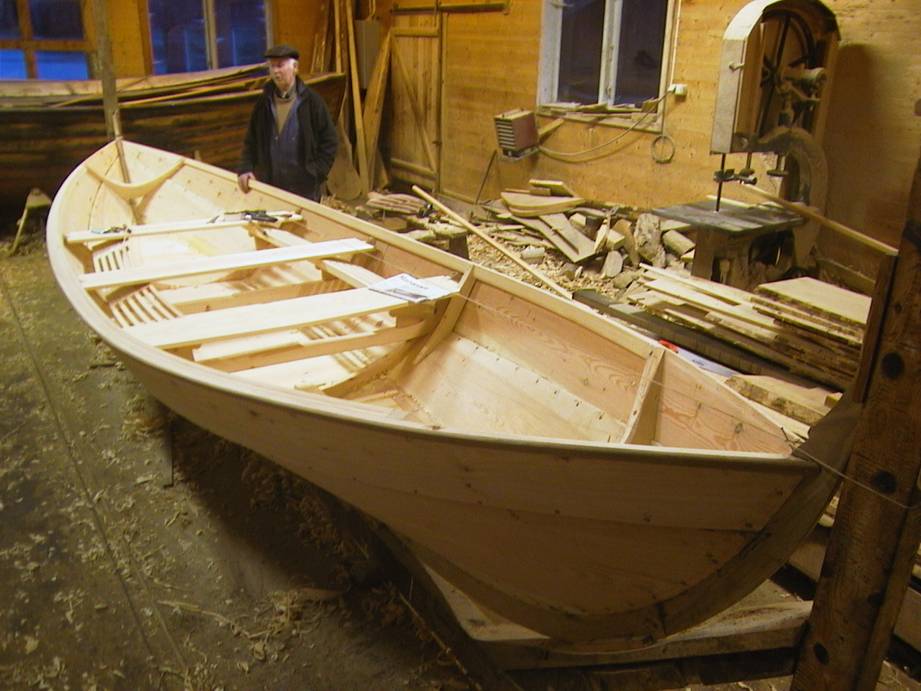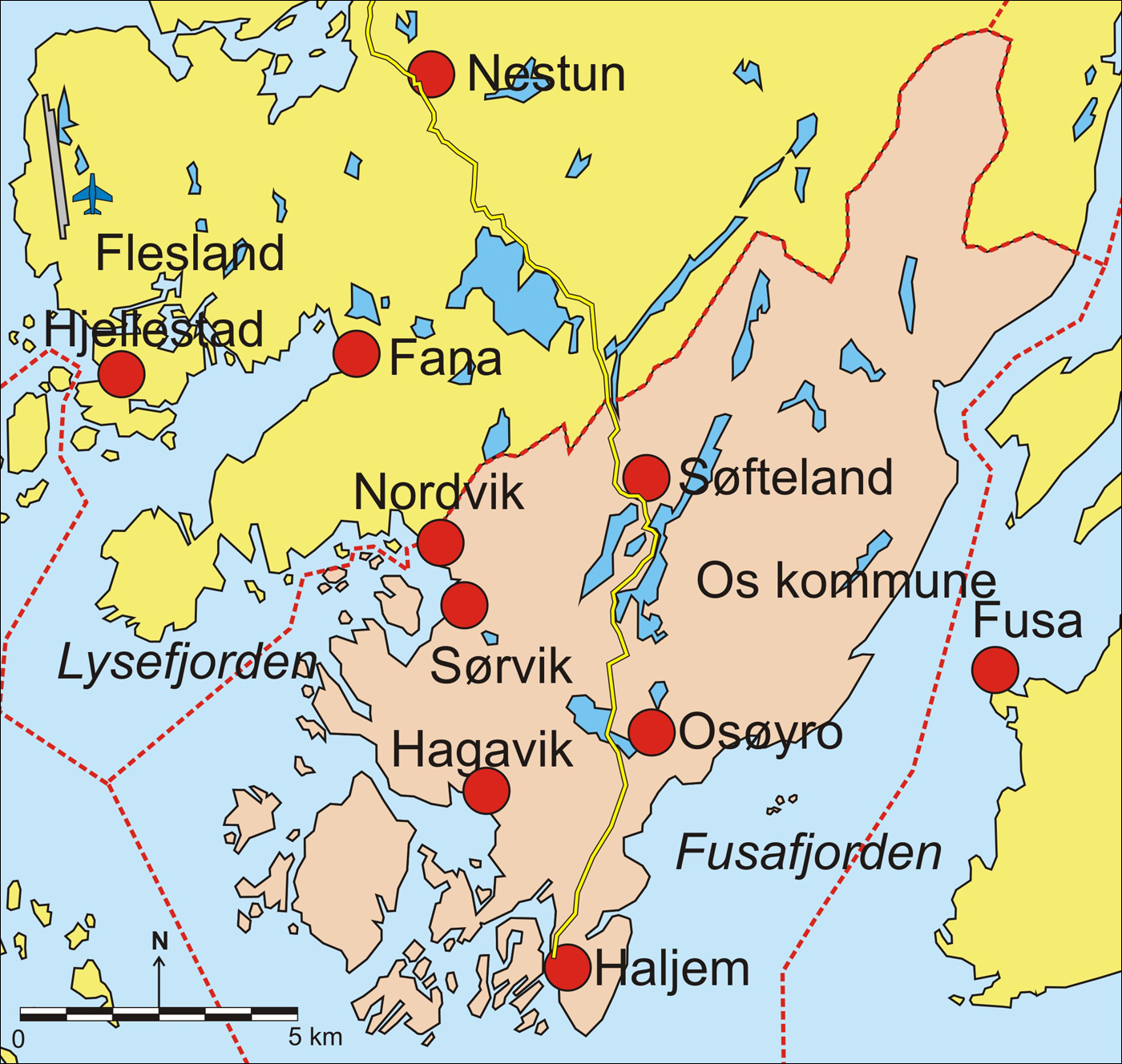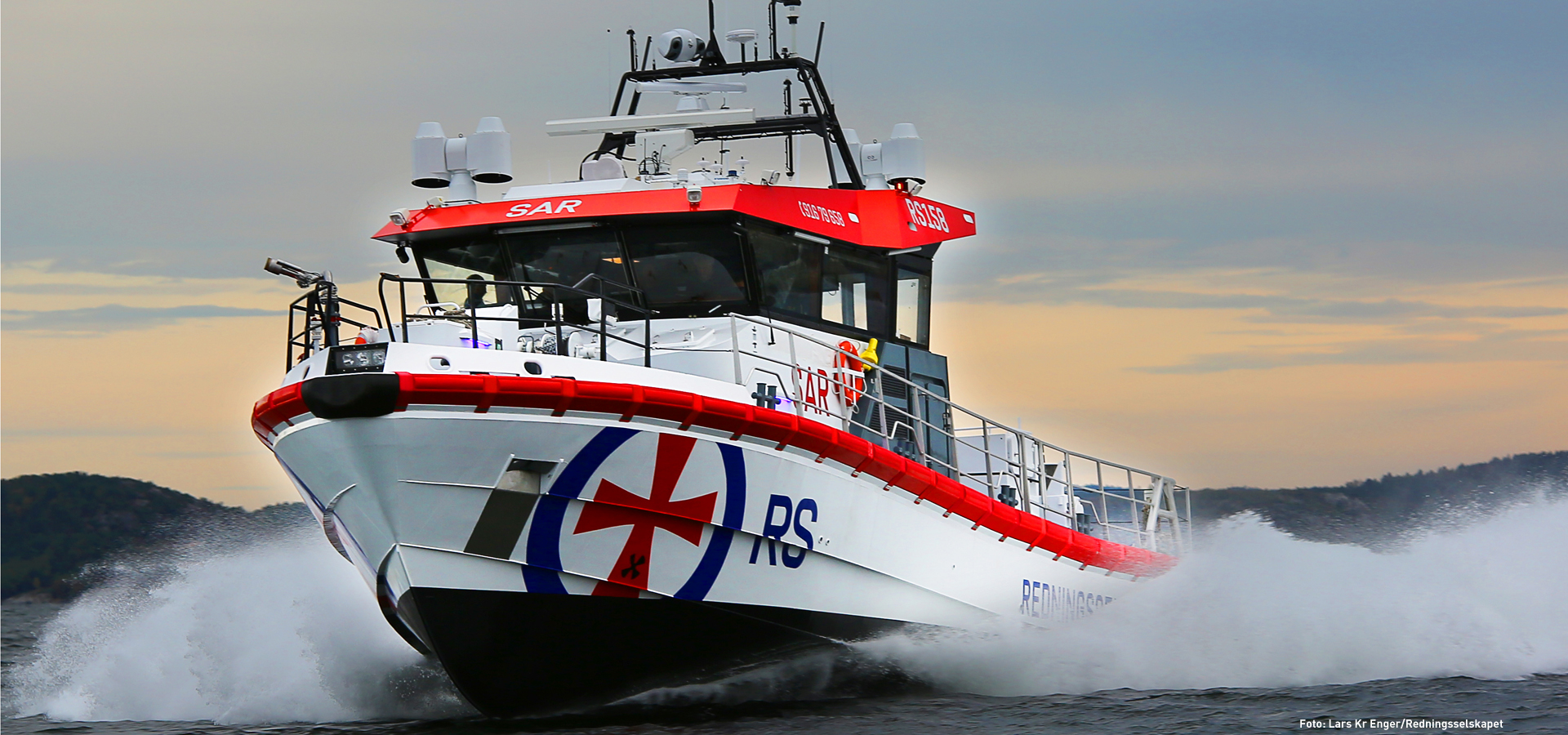|
Oselvar
The Oselvar or Oselver is a small wooden rowing boat traditionally built and used along the west coast of Norway. The Oselvar is a clinker built boat with thin, very wide planks. Almost all parts of an Oselvar are made of pine, with only the keel of oak. History This type of boat has been very common in the outer regions of Hordaland for hundreds of years. It was named after the major important building site for this type of boat during the 18th century, at the mouth of the Oselva River in Os in Hordaland county. In the early 1800s, boat building was an important industry in Os and the neighboring village of Tysnes, on the other side of the fjord. The stylized figure of an Oselvar appears on the coat of arms of the municipality of Os. Dating from at least the 1500s and continuing until 1860, these boats were exported in kit form principally to the Shetland and Orkney islands. During the North Sea crossing, the wooden boats were taken apart and then 'flat packed' for shippin ... [...More Info...] [...Related Items...] OR: [Wikipedia] [Google] [Baidu] |
Yoal
The yoal, often referred to as the ness yoal, is a clinker-built craft used traditionally in Shetland, Scotland. It is designed primarily for rowing, but also handles well under its traditional square sail when running before the wind or on a broad reach. The word is cognate with yawl and yole. Construction Until about 1860, yoals were imported in kit form from the area around Bergen in Norway. The traditional small wooden boats were known as either Strandebarmer or Oselvar from Os in Hordaland, Norway. The wooden boats were taken apart and then 'flat packed' for shipping to the Shetland Islands. Instead of sending complicated assembly instructions, they sent Norwegian boatbuilders to re-build them. However, increasing customs duty meant that Shetland builders took over the building but stayed mostly with the original Norwegian design. All the parts of a yoal have a name, perhaps to make assembly easier when they came in kit form, or to make it easier to order spare parts. In ... [...More Info...] [...Related Items...] OR: [Wikipedia] [Google] [Baidu] |
Os, Hordaland
Os is a former municipality in the old Hordaland county, Norway. It was located in the Midhordland region, just south of Norway's second-largest city, Bergen. Due to its proximity to Bergen, Os experienced strong population growth. The administrative centre (and commercial centre) of Os was the village of Osøyro. It is the largest settlement in the municipality, with over 60% of the municipal residents living here. Other large villages in Os included Hagavik, Halhjem, Søfteland, Søre Øyane, and Søvik. On 1 January 2020, the municipality became part of Bjørnafjorden Municipality in Vestland county. Prior to its dissolution in 2020, the municipality is the 360th largest by area out of the 422 municipalities in Norway. Os is the 57th most populous municipality in Norway with a population of 20,152. The municipality's population density is and its population has increased by 29.2% over the last decade. History The parish of Os was established as a formannskapsdistr ... [...More Info...] [...Related Items...] OR: [Wikipedia] [Google] [Baidu] |
Faering
A faering is an open boat with two pairs of oars, commonly found in most boat-building traditions in western and northern Scandinavia. History Faerings are clinker-built, with planks overlapped and riveted together to form the hull. This type of boat has a history dating back to Viking-era Scandinavia. The small boats found with the 9th century Gokstad ship resemble those still used in Western and Northern Norway, and testify to a long tradition of boat building. Faerings may carry a small sail, traditionally a square sail, in addition to oars. The only significant difference being a conversion from a side-mounted rudder to stern-mounted. They are used as small fishing vessels in areas of modern Norway, and occasionally raced. Etymology The word ''faering'' comes from the Norwegian word ''færing'' (Old Norse ''feræringr''), literally meaning "four-oaring". See also * Knarr *Spritsail * Oselvar *Nordland Nordland (; smj, Nordlánnda, sma, Nordlaante, sme, Nordlánda, ... [...More Info...] [...Related Items...] OR: [Wikipedia] [Google] [Baidu] |
Clinker (boat Building)
Clinker built (also known as lapstrake) is a method of boat building where the edges of hull planks overlap each other. Where necessary in larger craft, shorter planks can be joined end to end, creating a longer strake or hull plank. The technique originated in Scandinavia, and was successfully used by the Anglo-Saxons, Frisians, Scandinavians, typically in the vessels known as cogs employed by the Hanseatic League. Carvel construction, where plank edges are butted smoothly, seam to seam, supplanted clinker construction in large vessels as the demand for capacity surpassed the limits of clinker construction. (See Comparison between clinker and carvel below.). Examples of clinker-built boats that are directly descended from those of the early medieval period are seen in the traditional round-bottomed Thames skiffs, and the larger (originally) cargo-carrying Norfolk wherries of England. Etymology From ''clinch'', or ''clench'', a common Germanic word, meaning “to fasten ... [...More Info...] [...Related Items...] OR: [Wikipedia] [Google] [Baidu] |
Shetland
Shetland, also called the Shetland Islands and formerly Zetland, is a subarctic archipelago in Scotland lying between Orkney, the Faroe Islands and Norway. It is the northernmost region of the United Kingdom. The islands lie about to the northeast of Orkney, from mainland Scotland and west of Norway. They form part of the border between the Atlantic Ocean to the west and the North Sea to the east. Their total area is ,Shetland Islands Council (2012) p. 4 and the population totalled 22,920 in 2019. The islands comprise the Shetland constituency of the Scottish Parliament. The local authority, the Shetland Islands Council, is one of the 32 council areas of Scotland. The islands' administrative centre and only burgh is Lerwick, which has been the capital of Shetland since 1708, before which time the capital was Scalloway. The archipelago has an oceanic climate, complex geology, rugged coastline, and many low, rolling hills. The largest island, known as " the Mainland", ... [...More Info...] [...Related Items...] OR: [Wikipedia] [Google] [Baidu] |
Norwegian Society For Sea Rescue
The Norwegian Society for Sea Rescue (Redningsselskapet in Norwegian, commonly shortened to RS) is the only organization wholly dedicated to assisting people and vessels at sea along the extensive Norwegian coastline. Overview Norwegian Society for Sea Rescue is a charity organization funded partly by membership fees, partly by donations, and partly by government subsidies. It employs 197 professional seamen, 60 at the head office in Oslo, and 14 in the regional branches. The organization has 4,200 volunteers, and around 111,000 paying members. Pleasure craft owners can sign up for a "totalmedlemsskap" (Total Membership), a service and assistance package deal. The organization's vision is "None Shall Drown". The organization publishes the quarterly magazine ''RS-Magasinet''. Vessels The organization operates 51 vessels stationed along the Norwegian coastline, as well as one each stationed on the lakes of Femunden and Mjøsa. 26 of the rescue craft along the coast are larger ... [...More Info...] [...Related Items...] OR: [Wikipedia] [Google] [Baidu] |
Midsummer
Midsummer is a celebration of the season of summer usually held at a date around the summer solstice. It has pagan pre-Christian roots in Europe. The undivided Christian Church designated June 24 as the feast day of the early Christian martyr St John the Baptist, and the observance of St John's Day begins the evening before, known as Saint John's Eve. These are commemorated by many Christian denominations, such as the Roman Catholic Church, Lutheran Churches, and Anglican Communion, as well as by freemasonry. In Sweden, the Midsummer is such an important festivity that there have been proposals to make the Midsummer's Eve the National Day of Sweden, instead of June 6. In Finland, Estonia, Latvia and Lithuania, Midsummer's festival is a public holiday. In Denmark and Norway, it may also be referred to as St. Hans Day. History Saint John's Day, the feast day of Saint John the Baptist, was established by the undivided Christian Church in the 4th century AD, in honour ... [...More Info...] [...Related Items...] OR: [Wikipedia] [Google] [Baidu] |
North Sea
The North Sea lies between Great Britain, Norway, Denmark, Germany, the Netherlands and Belgium. An epeiric sea on the European continental shelf, it connects to the Atlantic Ocean through the English Channel in the south and the Norwegian Sea in the north. It is more than long and wide, covering . It hosts key north European shipping lanes and is a major fishery. The coast is a popular destination for recreation and tourism in bordering countries, and a rich source of energy resources, including wind and wave power. The North Sea has featured prominently in geopolitical and military affairs, particularly in Northern Europe, from the Middle Ages to the modern era. It was also important globally through the power northern Europeans projected worldwide during much of the Middle Ages and into the modern era. The North Sea was the centre of the Vikings' rise. The Hanseatic League, the Dutch Republic, and the British each sought to gain command of the North Sea and access ... [...More Info...] [...Related Items...] OR: [Wikipedia] [Google] [Baidu] |
Orkney
Orkney (; sco, Orkney; on, Orkneyjar; nrn, Orknøjar), also known as the Orkney Islands, is an archipelago in the Northern Isles of Scotland, situated off the north coast of the island of Great Britain. Orkney is 10 miles (16 km) north of the coast of Caithness and has about 70 islands, of which 20 are inhabited. The largest island, the Mainland, has an area of , making it the sixth-largest Scottish island and the tenth-largest island in the British Isles. Orkney’s largest settlement, and also its administrative centre, is Kirkwall. Orkney is one of the 32 council areas of Scotland, as well as a constituency of the Scottish Parliament, a lieutenancy area, and an historic county. The local council is Orkney Islands Council, one of only three councils in Scotland with a majority of elected members who are independents. The islands have been inhabited for at least years, originally occupied by Mesolithic and Neolithic tribes and then by the Picts. Orkney wa ... [...More Info...] [...Related Items...] OR: [Wikipedia] [Google] [Baidu] |
Fjord
In physical geography, a fjord or fiord () is a long, narrow inlet with steep sides or cliffs, created by a glacier. Fjords exist on the coasts of Alaska, Antarctica, British Columbia, Chile, Denmark, Germany, Greenland, the Faroe Islands, Iceland, Ireland, Kamchatka, the Kerguelen Islands, Labrador, Newfoundland, New Zealand, Norway, Novaya Zemlya, Nunavut, Quebec, the Patagonia region of Argentina and Chile, Russia, South Georgia Island, Tasmania, United Kingdom, and Washington state. Norway's coastline is estimated to be long with its nearly 1,200 fjords, but only long excluding the fjords. Formation A true fjord is formed when a glacier cuts a U-shaped valley by ice segregation and abrasion of the surrounding bedrock. According to the standard model, glaciers formed in pre-glacial valleys with a gently sloping valley floor. The work of the glacier then left an overdeepened U-shaped valley that ends abruptly at a valley or trough end. Such valleys are fjords when ... [...More Info...] [...Related Items...] OR: [Wikipedia] [Google] [Baidu] |






.jpg)


.jpg)